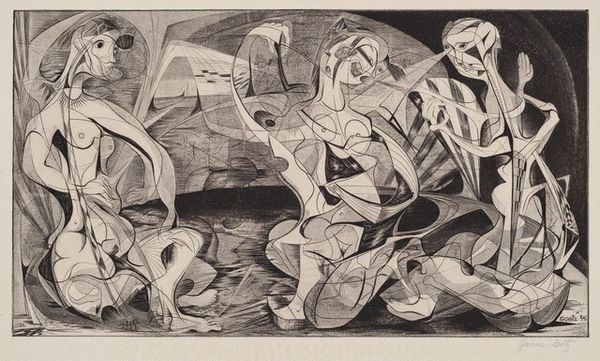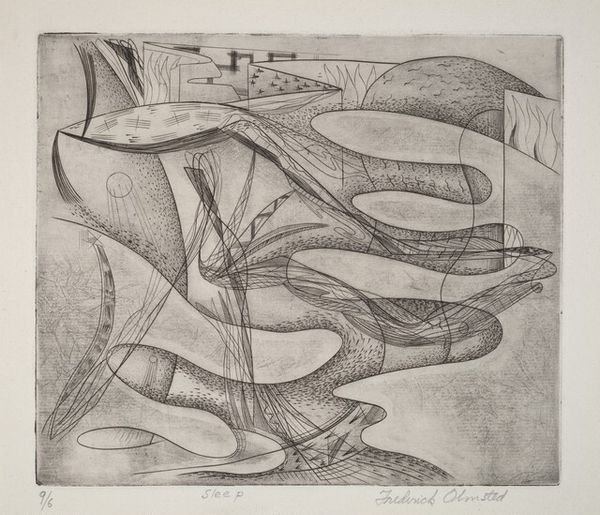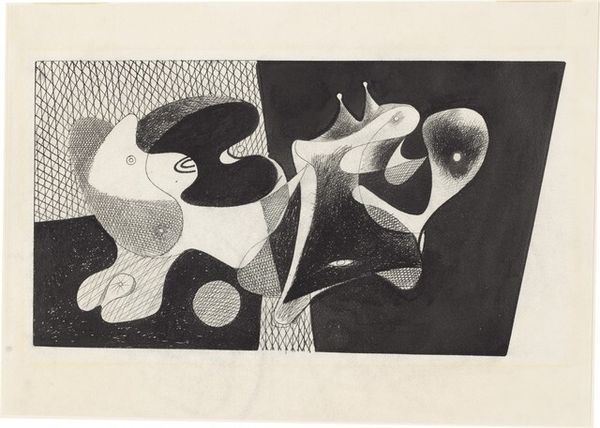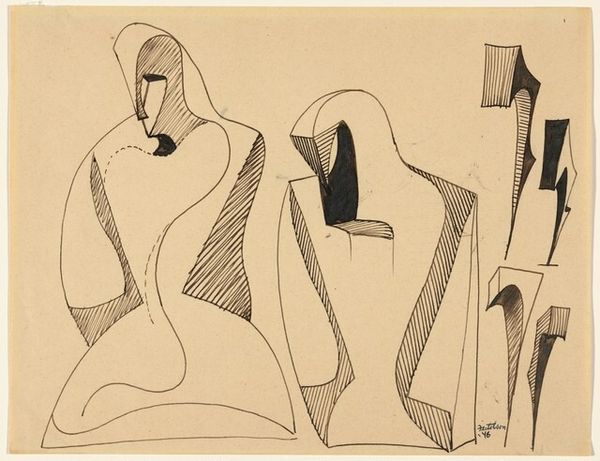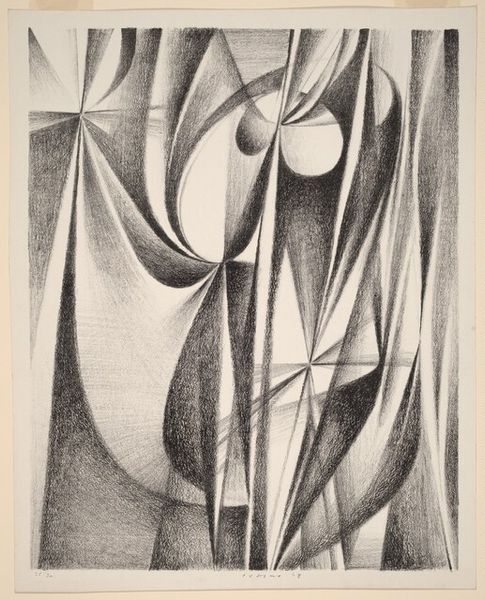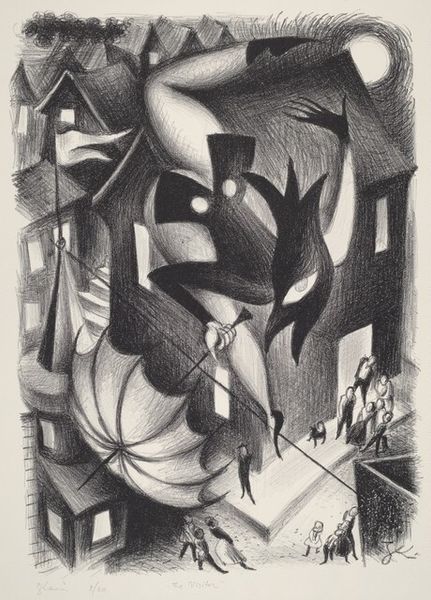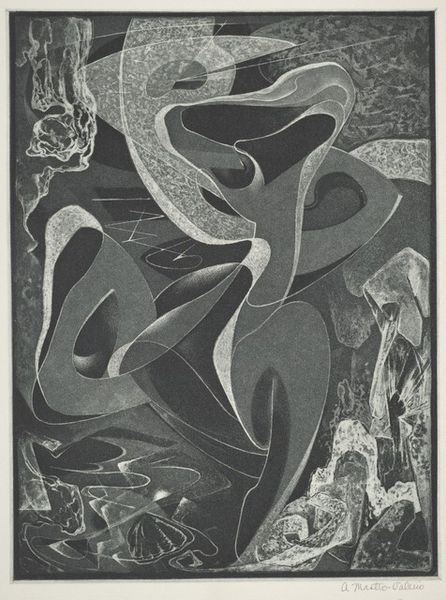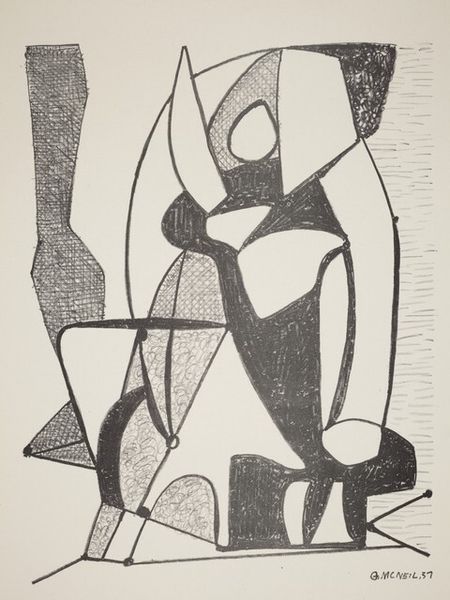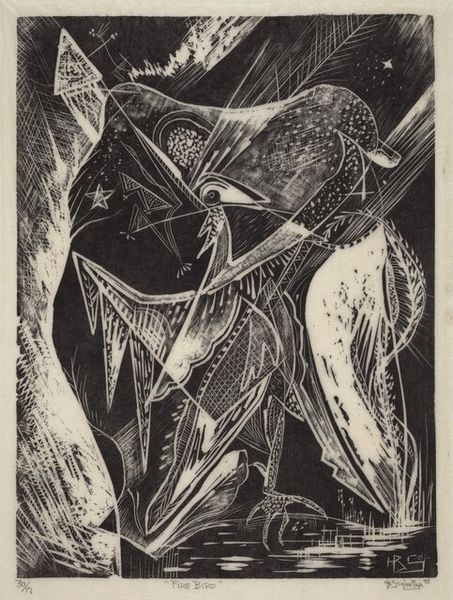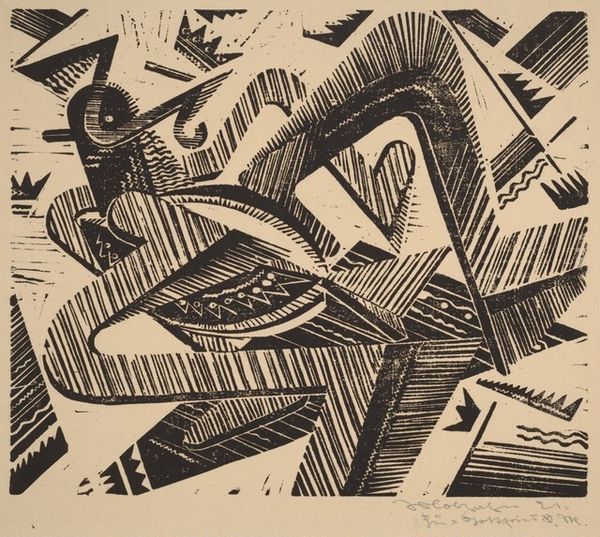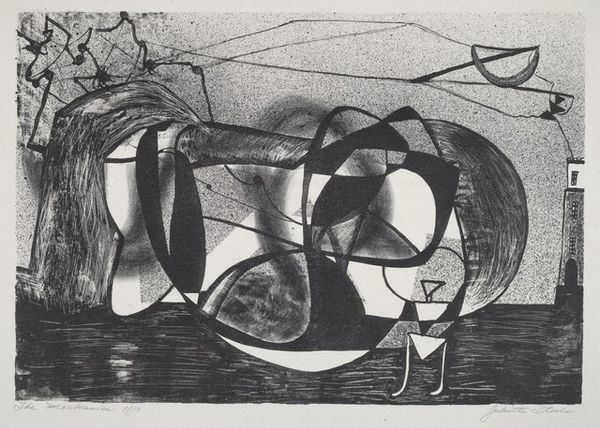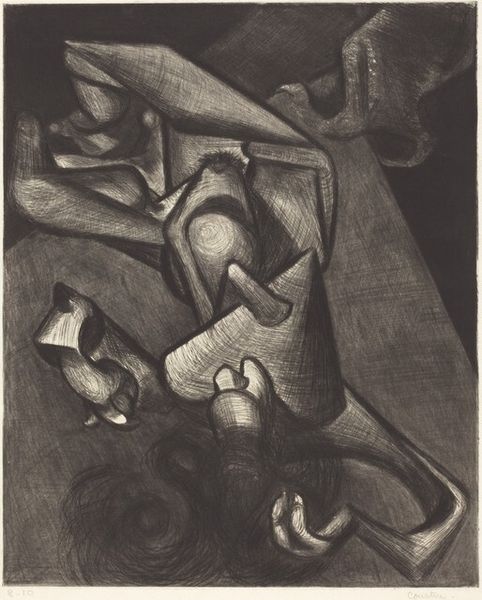
drawing, print, paper, graphite
#
abstract-expressionism
#
drawing
# print
#
paper
#
form
#
surrealism
#
abstraction
#
line
#
graphite
#
surrealism
Dimensions: image: 233 x 276 mm sheet: 315 x 378 mm
Copyright: National Gallery of Art: CC0 1.0
Editor: Here we have Barbara Olmsted's "Memory of the Dark," a graphite print on paper from around 1941. The swirling lines and contrasting shades create quite an unsettling mood. How do you interpret this work, especially considering its historical context? Curator: The historical context is indeed vital. Olmsted created this piece during a time of immense global turmoil, with World War II raging. This was a period that heavily influenced the subjects addressed in the art world and certainly this surrealist abstraction suggests anxieties of the era. Consider how societal and political uncertainties might be filtered through the subconscious. Editor: It does feel like a dreamscape, maybe even a nightmare. The forms are recognizable yet distorted. I was wondering how institutions exhibited art from women like Olmsted? Curator: That's an important question. During the 1940s, galleries and museums were often dominated by male artists, reflecting broader societal power dynamics. Women artists, particularly those working in abstract or surrealist modes, often faced challenges in gaining recognition and exhibition opportunities. It highlights how the reception of art is very dependent on social and cultural influences, including gender politics. Are you aware of any historical events or social factors that could've influenced that? Editor: Hmm, I'd have to refresh my memory of the politics from the early 1940's to connect those dots in detail... Curator: And what a productive undertaking! Thinking about gender dynamics could enrich an appreciation for artists working against norms during that period. Editor: Absolutely. Considering this piece within its social and political landscape makes it even more poignant. Curator: Indeed. It shows how art both reflects and can critique the public role of social structures and historical moments. We both can take this view forward for our understanding and interpretations of artwork and art making practices!
Comments
No comments
Be the first to comment and join the conversation on the ultimate creative platform.
